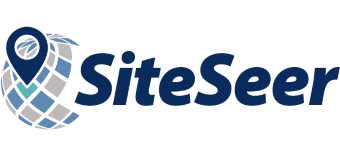 Maybe you’ve seen companies making bold claims about their site selection software lately. Thousands of sites accurately forecasted…in mere seconds! If you’re wondering whether technological advancements have replaced the analyst and single-site sales forecasting, allow us to put it simply: no.
Maybe you’ve seen companies making bold claims about their site selection software lately. Thousands of sites accurately forecasted…in mere seconds! If you’re wondering whether technological advancements have replaced the analyst and single-site sales forecasting, allow us to put it simply: no.
We’ve been talking recently on the blog about artificial intelligence (AI) in real estate site selection. It’s true that machine learning has enabled companies like SiteSeer to improve the accuracy of algorithms that learn as your business expands and grows, and also improve our sales forecasting accuracy.
But is it possible to shift the responsibility for decision making about site selection completely to a product like SiteSeer? Let’s explore these claims and the realities:
If a tool is producing thousands of forecasts in seconds, it’s fully automated.
That means no input from the analyst who is running those forecasts. The problem? Although customer attributes and behavior might be easy to collect and evaluate in an automated routine, it is unlikely that your model will include observational data like ingress/egress, visibility or competitive quality (because it cannot be purchased and must be collected).
Accuracy does not mean most accurate.
How accurate is good enough? Are you looking for a model that picks winners 80% of the time? One that has a high R-square or low error? Generally, accurate should mean that a model returns results that are in line with what you’d get from a model where you ran sites individually. Again, a fully automated model will not have access to all the data it needs to be accurate and therefore will produce lower-quality forecasts than if you evaluated each site individually.
“Training” a model isn’t fast.
Thousands of forecasts in seconds sounds great, but the problem is that there are multiple stages to model building:- Preparing/engineering the data
- Training the model
- Running predictions
Step #1 alone takes weeks or days at best, but training (step #2) takes time too. That’s when the software learns from your data and builds an accurate model. So, the question you must ask yourself is whether you are willing to sacrifice accuracy for speed. You should be focused on using the best data and techniques, even if it means a little more time and analyst involvement.
At SiteSeer, we don’t overpromise and we don’t make exaggerated claims because they sound great. We tell clients every day that a tool like SiteSeer is just that: a tool. The information you get out of SiteSeer will help you make better location decisions, no doubt. But you should combine that information with your own expertise and experience as well as other information you collect on a site, such as traffic patterns, visibility, foot traffic, and an area of town’s general vibe, reputation and feel (e.g. safety and vibrancy).
Yes, it is true that AI will help you make better site selection decisions and evaluate sites’ potential more thoroughly. However, it’s important to keep in mind the following:
-
AI modeling practices are best for businesses with history.
AI models learn from continuous data input. So, if you’re a new business, AI models won’t help you as much as a traditional statistical model approach that doesn’t require historical data. -
You cannot build accurate models if you buy cheap data.
What do we mean by cheap? Outdated or incomplete (and therefore inaccurate). The saying “garbage in, garbage out,” applies here. If you use a tool like SiteSeer without good demographic, psychographic, competitor, etc. data (and your own internal customer and sales data), the results won’t be as accurate. Good data is worth the additional cost. Free or cheap data is free or cheap for a reason. -
A model is still a model.
In other words, you can build a great model that uses machine learning techniques, but it is conceivable that later on, you’ll learn that some of your underlying assumptions weren’t correct. In other words, there is no way to predict what will happen in the real world. Your competition might build down the street from a site you select. You might have grossly miscalculated how your competition would react to you moving into their turf. -
High-volume site evaluation does have its place.
Let’s say you’re looking at a huge market like Los Angeles, and want to narrow down your options to a manageable number of sites. You might be more willing to give up some accuracy for speed, knowing that you’ll do further analysis on the sites that make the cut.
Machine learning/AI is powerful and can help you make better decisions. But if a company’s claims sound too good to be true, they probably are.
There are too many market and competitive factors that are out of your control. There are variables that will impact your business that, try as you might, you’ll never be able to predict.
In a world full of unknowns, a location intelligence product like SiteSeer can help you take the “known” factors along with good data and a powerful platform to improve your site selection process and your decision making.
Want to learn more about expanding the smart way with SiteSeer? Contact us for a demo.

